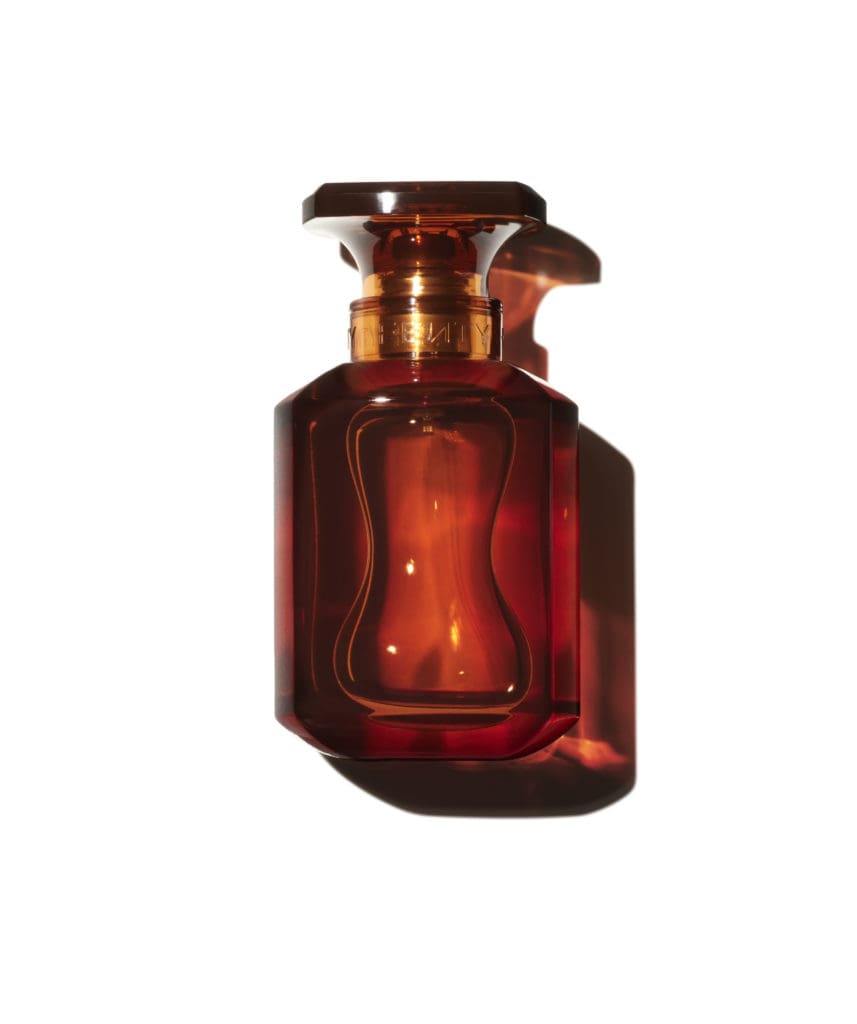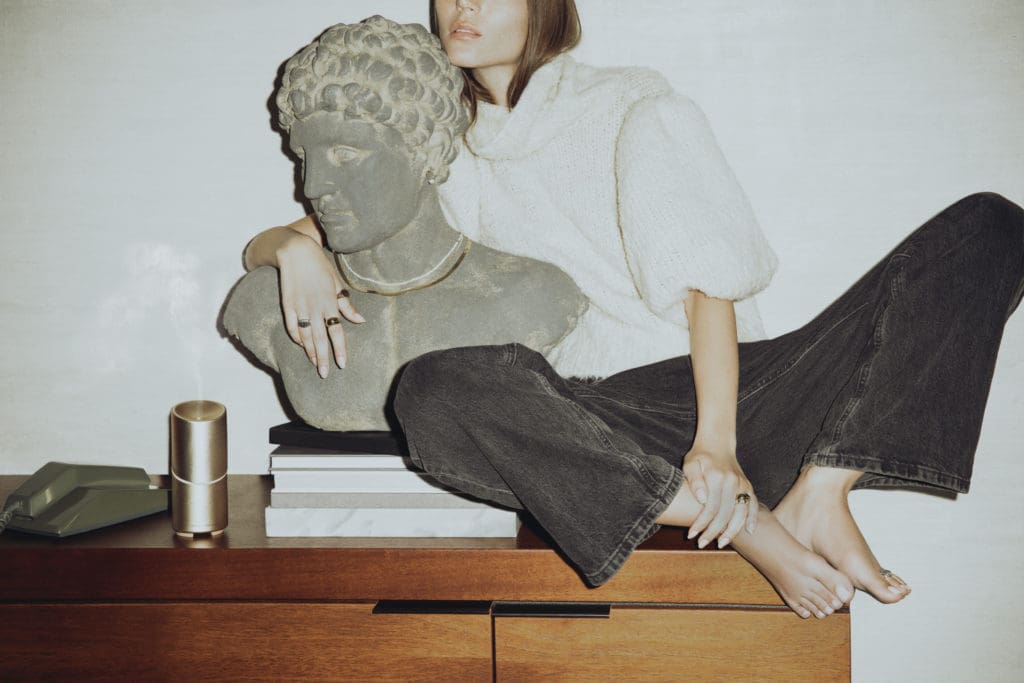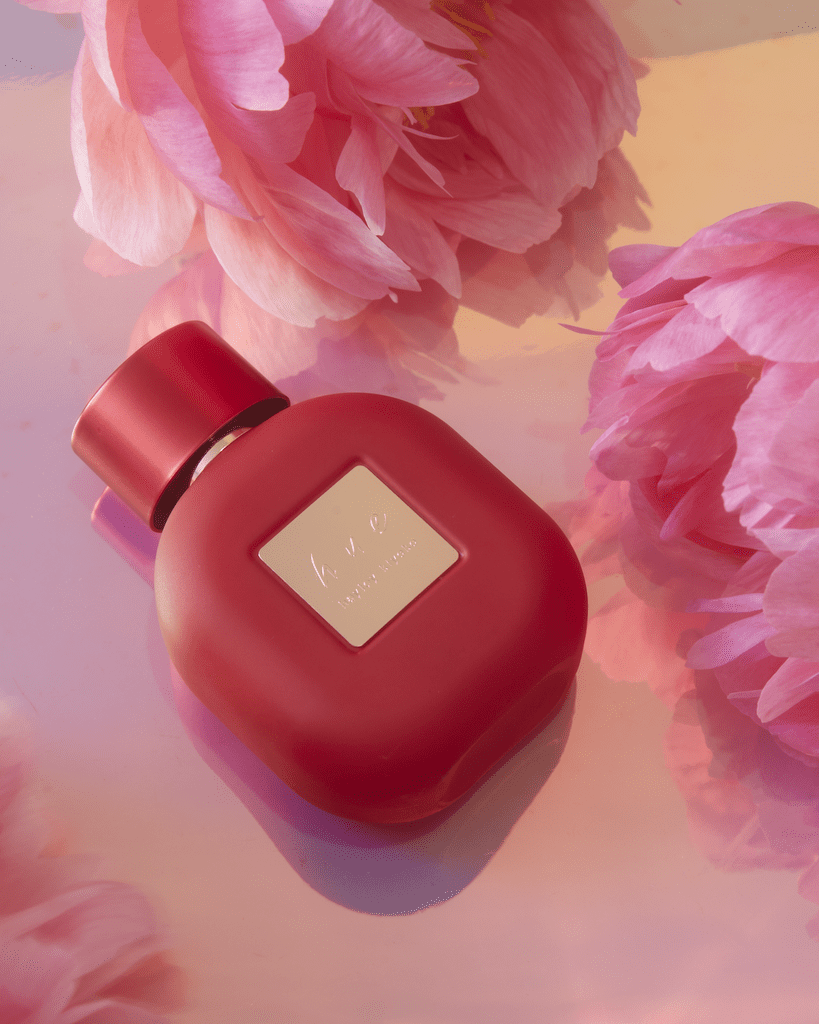Whether it be for your home or for wear, choosing a signature fragrance is a personal choice that’s largely dependent on what notes you gravitate toward and the “vibe” you want to exude. But what goes into creating a signature scent for a celebrity—or, for that matter, an entire brand?

The last few decades have seen a shift from, simply, famous spokespersons to fully celeb-owned beauty brands taking up shelf space in the fragrance aisle. Jennifer Lopez launched, through Coty, Glow by JLo in 1998; Elizabeth Arden and Britney Spears followed suit with Fantasy, in a Swarovski crystal-adorned bottle, in 2005. Fast-forward to 2021, when Rihanna’s seductive and sweet Fenty Eau de Parfum sold out not once, but twice, after its release through her own massively successful beauty brand. Now, in addition to restocking the fragrance, the Bad Gal has also released a special gift set featuring a limited-edition Fenty scarf wrapped around the signature amber-hued bottle—just in time for holiday gifting. Renowned master perfumer and the “nose” behind the Fenty scent, Jacques Cavallier, shares that creating a signature fragrance for Rihanna was anything but traditional. Rather than focusing on creating a formula with a top, middle and heart note, he aimed to create something where every raw material was integral to the end result.
“From a creative point of view, I’ve seen few people like her. I wanted to celebrate the woman she is,” he says. “My starting point was quite clear: Rihanna has to be in the bottle. My work was really this translation of her, so sparkling, dynamic, sensual. We made something radiant, something essential. This perfume is a love elixir. And what I liked the most is to have the personality, the allure, the silhouette of the perfume in the air—but, on skin, it has to be a personal story.”
For Slate Brands marketing specialist Emily Collins, personifying a scent is about how a celebrity sees themselves and what they hope to portray to their audience. “We typically ask the creator to describe themselves and their existing brand to develop in a minimum of a few words or sentences to understand their general goals when it comes to fragrance,” she shares. When developing a perfume with Hayley Kiyoko, for instance, Slate Brands—a full-service beauty incubator for innovators and creative entrepreneurs—let the American singer, dancer and actress take the creative lead on the formulation of her scent, Hue. “There was a lot of thought that went into the making of Hue, but gender-inclusive was non-negotiable for Hayley. She wanted a scent that was bold, complex and empowering, but also blurred the lines between femininity and masculinity,” says product development manager Marcella Bijou. “Hayley felt very strongly about incorporating fruity and floral notes but didn’t want the fragrance to be overly feminine. The fresh florals and citrus are an ode to more feminine scents, but the musk and cacao on the bottom offer some masculinity as well, making it the perfect genderless fragrance.”

When it comes to formulating a fragrance for an established brand, the same questions are asked in order to develop an aroma that evokes the company’s ethos and energy—in other words, its products, services and what customes understand it to represent. In creating its first signature scent, The Amber Collection, with fellow Canadian and fragrance designer Ruby Brown, Le Germain Hôtels aimed to incorporate the feeling of “resting easy” into a line of luxury bodycare products. “Scent is very intimately related to emotions and to memories; now that the Amber Collection is available [in all of the hotels] across the country, you can get the same home-away-from-home feeling [at all Le Germain properties],” says Brown, adding that the range can also be purchased at Simons “for your home to feel like a holiday.”
The Vitruvi x Mejuri collab has a unique challenge in the fact that neither company is, say, a physical space (like a hotel), or a person. The puzzle: how to create a joint signature scent that represents both entities to two presumably unique sets of customers? The brands—Vitruvi a provider of home-scenting products and Mejuri offering fine jewelry—solved this by partnering on an oil blend, Sèjour, that invites one to linger and savour the precious moments that occur daily. The blend is recommended to be used in a limited-edition Move cordless essential oil diffuser—gold and “luxurious, like the jewelry you never take off,” and available on both websites.
“From making your morning routine feel special to being the centerpiece at your dinner party, Move elevates your life’s everyday moments,” according to Mejuri’s site. “It’s the feeling of home—no matter where you are,” reads Vitruvi.com. “Lingering a little longer. Sinking into a velvet armchair. Gold earrings and a good book.” We clearly see both brands represented in, well, the branding of this joint effort.

Justine Lançon, chief creative officer at Mejuri, adds that the Vitruvi client and Mejuri client are more alike than they are different, and this assisted in the effort to create an inclusive signature. “We wanted it to be a scent you can live in everyday that brings you comfort and confidence just like our jewelry pieces,” she says. “We wanted it to embody a sense of playfulness, curiosity and grounded-ness. It is designed to be for everyone and anyone. We are excited to incorporate this scent in all of our retail stores as well.” What can we say? It makes good scents. —Vicki Duong & Noa Nichol

Be the first to comment